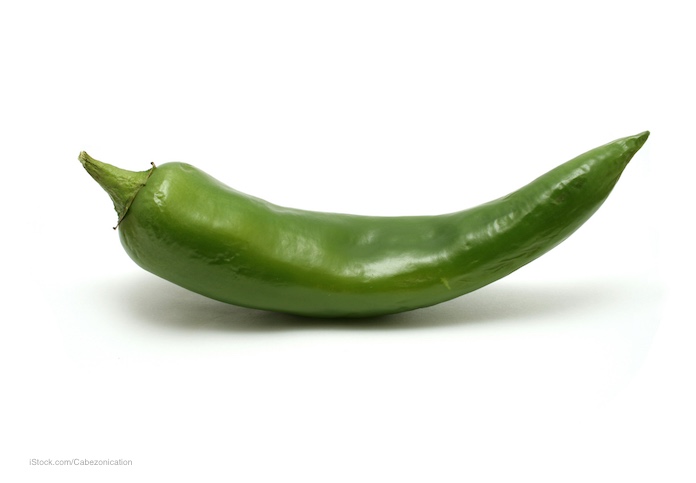A multistate outbreak of Salmonella Anatum infections that were linked to imported hot peppers appears in the The Morbidity and Mortality Weekly Report for June 30, 2017. This is the first government report on this outbreak. Thirty two people in nine states were sickened in this outbreak that happened during the summer of 2016.

The CDC and FDA did not publish anything about this outbreak at the time because government officials couldn’t find a source for the outbreak, specifically a common source for the peppers, so consumers couldn’t take steps to protect themselves. Epidemiologic, lab, and traceback evidence found that fresh hot peppers were the likely source, but “a single pepper type or source farm could not be identified.”
Fresh hot peppers and other produce have been the sources for many outbreaks in the past few years. In fact, the FDA started increasing testing of cucumbers and hot peppers in 2015 after outbreaks. In 2008, fresh hot perps were associated with an outbreak that sickened 1,500 people, hospitalized more than 300, and killed two. Peppers contaminated with Salmonella have been recalled many times since 2010. The most recent recall was for Habanero peppers from Montero Farms in Texas.
Back to the outbreak. In 2016, PulseNet found a cluster of 16 Salmonella Anatum infections with the same PFGE pattern. The same pattern was uploaded to PulseNet from an isolate found on an Anaheim pepper. This PFGE pattern had only been seen 24 times before in the PulseNet database.
Thirty-two patients in nine states were identified as being part of the outbreak. Illness onset dates ranged from May 6 through July 9, 2016. Officials interviewed patients who were part of this outbreak. The foods eaten the week before they got sick were: tomatoes (71% of respondents); pork (64%); avocado/guacamole (57%); jalapeños, a hot pepper that can vary from mild to hot heat (36%); and cantaloupe (36%). Seven of the 14 patients interviewed said they had eaten at a Mexican-style restaurant before they got sick.
The median patient age was 36 years (range = 4–79 years); 19 (59%) were female. Eight patients were hospitalized because their illnesses were so severe. No deaths were reported.
Open ended questions were then asked, which can identify uncommon exposures with more detailed information. Patients from Texas, Colorado, Illinois, and Minnesota were interviewed. Among 18 patients interviewed, 14 said they ate, or possibly ate, fresh hot peppers the week before they got sick.
Restaurants where patients said they consumed peppers were visited next. Recipes were collected. Traceback was conducted on the food from point of service to its origin or manufacture source. The supply chain was very complicated, and peppers from different suppliers were red together, repacked, and resold. The peppers could have been contaminated in the field, during harvest, during processing, or during transport. So the FDA could not identify a single source farm or point of contamination.
Complicating the matter was the fact that the patients interviewed said they did not eat Anaheim peppers before they became ill, most likely because they couldn’t identify it or because they ate that type of pepper in salsa or a prepared dish. And the companies that sold produce to one of the restaurants in question kept incomplete records.
The Salmonella Anatum isolate from the Anaheim pepper that matched the outbreak strain was the defining factor in this outbreak. The FDA placed one consolidator/grower on import alert for Anaheim peppers during this time period. That importer was not identified in the report. Te report states, “The strong genetic relationship between the clinical and food isolates, in combination with the epidemiologic and traceback evidence, indicated that fresh hot peppers were the likely source of the outbreak. Nevertheless, it was not possible to implicate one pepper type or source farm.”
This outbreak stresses the importance of preventing contamination on produce to reduce the risk of food poisoning. A 2009 study of Salmonella in fresh salsa found that chopped jalapeños were more supportive of Salmonella growth than other raw vegetables when stored at 53°F to 69°F. Temperature control is crucial for fresh produce as well as meats and poultry.




